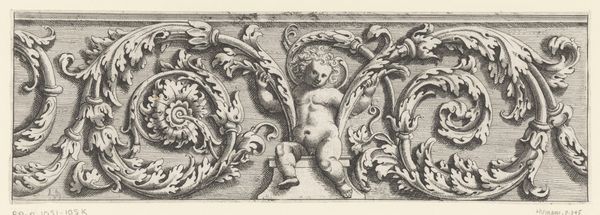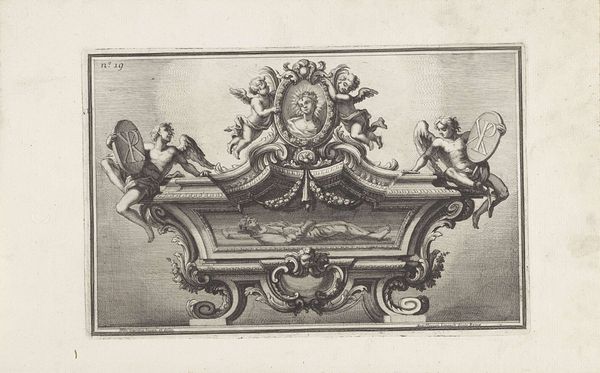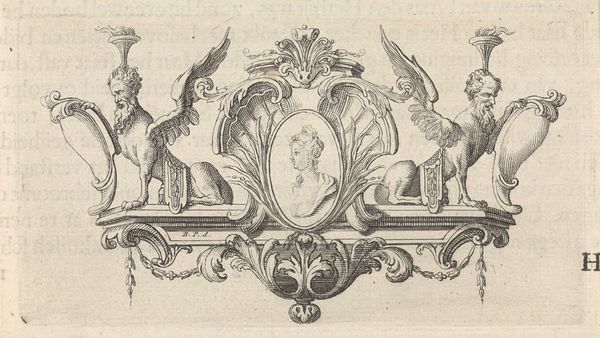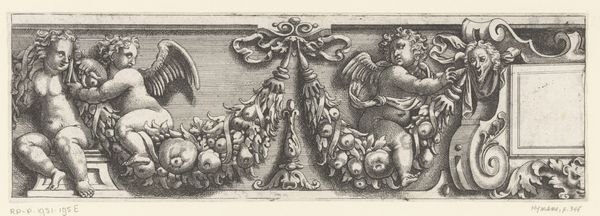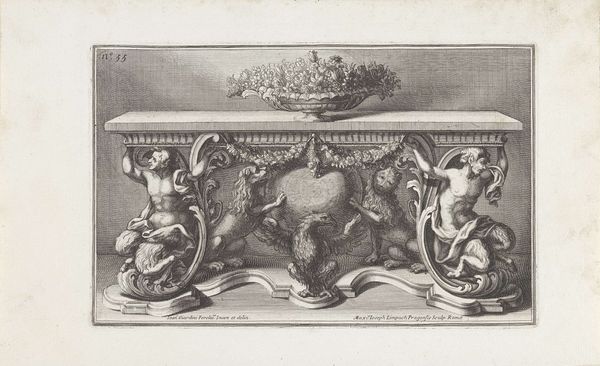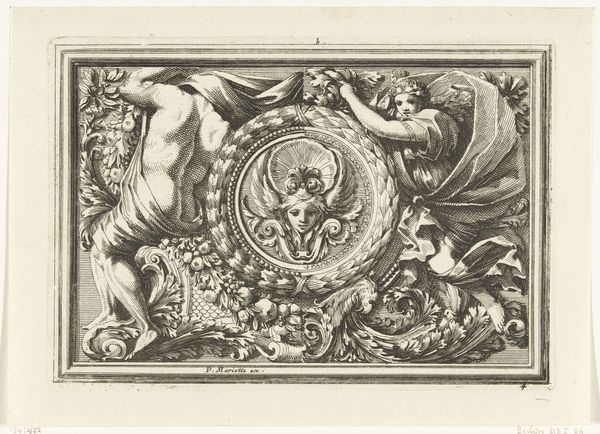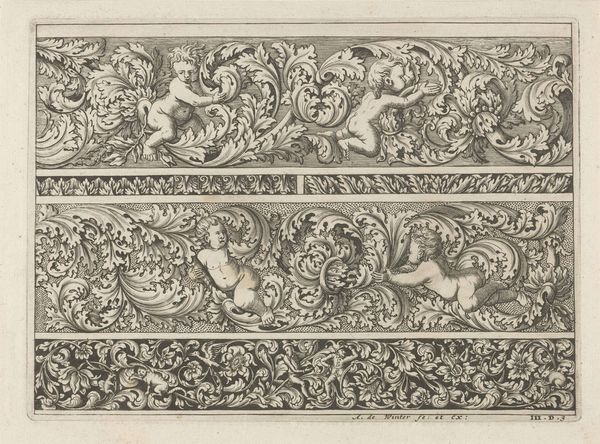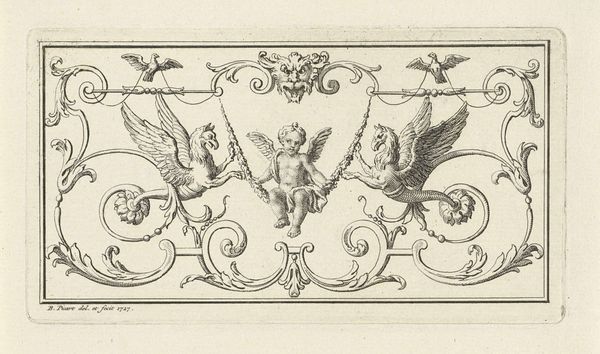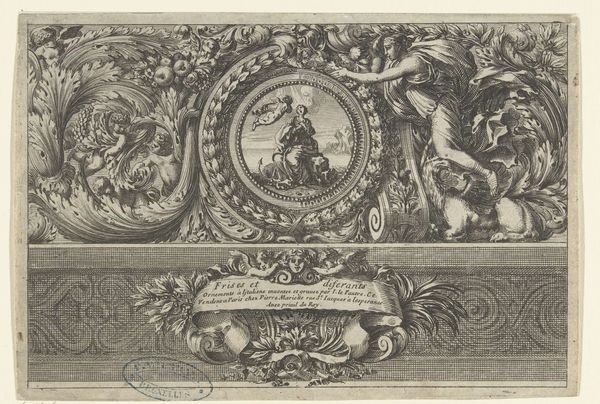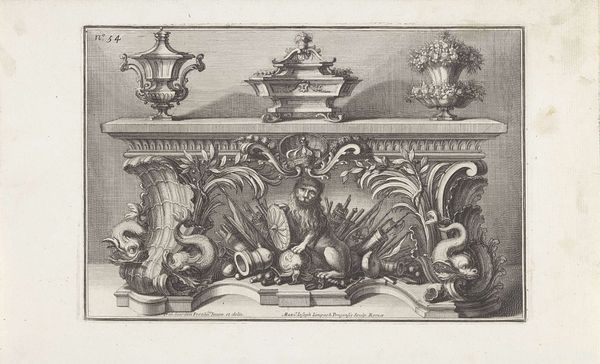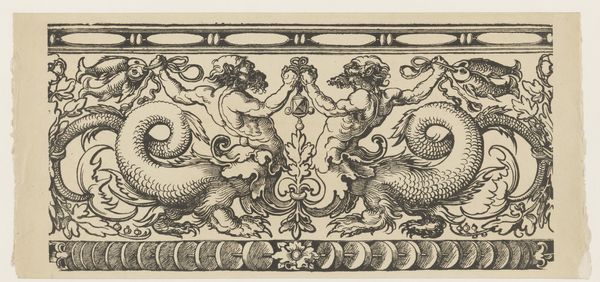
engraving
#
table
#
allegory
#
baroque
#
form
#
decorative-art
#
engraving
Dimensions: height 181 mm, width 287 mm
Copyright: Rijks Museum: Open Domain
Curator: Here we have Maximilian Joseph Limpach’s “Ornamentele Tafel,” created in 1714 and held at the Rijksmuseum. It's a detailed engraving depicting an ornate table design. Editor: What strikes me immediately is the dynamism. Even in this monochrome rendering, the composition seems to burst with movement, particularly through the draping fabrics and the figures. There’s an inherent tension between the static, architectural elements and the lively figures adorning it. Curator: That tension speaks directly to the Baroque style. Consider the likely patrons and viewers of such a piece: the European elite consumed these types of ornamental designs as signs of wealth and knowledge, disseminated through printed formats and suggesting very specific notions about refined taste and access. The labor required for fine engraving should not be understated, reflecting both skilled craftsmanship and access to a sophisticated network. Editor: Absolutely. Look at the iconography itself—cherubs, lions, an eagle, garlands—it's a very precise visual language. How do you read that heraldry positioned centrally on the eagle's shield? It is almost like Limpach encoded levels of symbolic significance. Curator: These weren’t arbitrary decisions. Limpach’s image would have been one small part of a much larger system of design, printmaking, and patronage. This economy depended on images being both understandable and aspirational. We can imagine a craftsman carefully tracing the artist's linear complexities onto furniture, transforming a two-dimensional design into a tangible commodity for consumption and trade. Editor: Yes, and thinking of it transformed, what impact do you imagine Limpach sought? Was it aspirational to decorate one’s home with such extravagant embellishment, given the period? Curator: Well, in the early 18th century, having this level of detail in a residence would denote substantial influence and resources. Editor: For me, even abstracted onto paper, the visual intricacies of the composition elicit an appreciation of balance, but it can't be viewed simply in aesthetic terms, separated from class and social contexts of the period. It's a delicate convergence of aesthetic elegance and material circumstances that offers insights into social hierarchies through these luxurious items. Curator: Precisely; the ornamental and functional interweave. The legacy remains fascinating to dissect. Editor: Yes, the Baroque fascination indeed persists, echoing across visual design and craftsmanship!
Comments
No comments
Be the first to comment and join the conversation on the ultimate creative platform.

